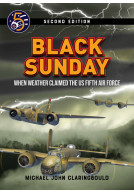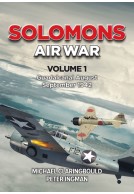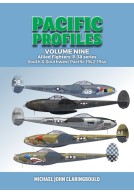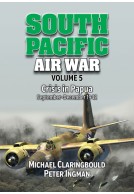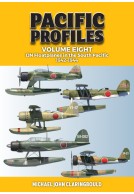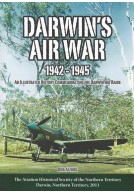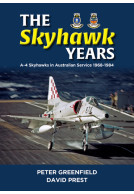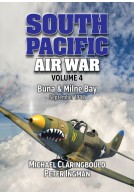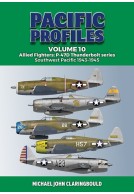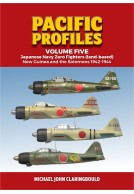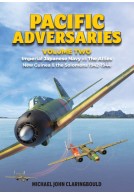Black Sunday (Paperback)
When Weather Claimed the US Fifth Air Force
Imprint: Avonmore Books
Pages: 136
Illustrations: fully illustrated; colour
ISBN: 9780645246988
Published: 15th November 2022
(click here for international delivery rates)
Order within the next 3 hours, 21 minutes to get your order processed the next working day!
Need a currency converter? Check XE.com for live rates
Any USAAF pilot who flew the mission to Hollandia on the fateful afternoon of 16 April 1944 in New Guinea would remember it for the rest of their lives. So would anyone else in the theatre, for the weather-related losses that fateful day earned it the eternal epithet “Black Sunday”. The way home for more than three hundred bombers and fighters was blocked by a towering weather front whose thunderstorms rose well above any altitude they could reach. Over enemy territory and caught between mountains and the sea, there was no option but to confront nature. By dusk that evening 37 aircraft were missing or had been destroyed. A handful of survivors somehow made it back to valley and coastal bases in a series of arduous misadventures. It was, and remains, the biggest non-combat loss of any air force of any nation in the world. More than seven decades later, aircraft from the day are still missing somewhere in the New Guinea jungle. This major revision to the original version includes dozens of rare photos, complemented by a suite of maps, indexes, and colour profiles of participant aircraft. Japanese diaries reveal the fate of unlucky P-38 pilots forced to bail out. The text liberally cites veteran interviews, post-war wreck surveys and official USAAF records. The narrative tracks down the fate of every aircraft and every crew member, including those who rescued them. Put yourself in the cockpit against nature’s massive odds over hostile terrain and watch a composite picture evolve. The accelerating narrative from dozens of different perspectives is both fascinating and overwhelming.
Most military aviation books are about a specific unit, aircraft, battle, or person. There are very few books out there about what some aircrew would describe as scarier than the enemy. And that is the ever-present danger of severe weather. The renowned aviation historian, Michael Claringbould shines the light on a lesser-known USAAF 5th AF mission on 16 April 1944 to Hollandia. The weather encountered on the return trip from Hollandia presented a great challenge to the 300 fighters and bombers trying to get back to their bases in New Guinea. Towering thunderstorms that stretched far and wide with tops well over the service ceiling of the aircraft involved and high terrain caused the loss of 37 aircraft and 54 airmen killed or missing in action. No aircraft were lost due to enemy action, and it was virtually a "milk run" in regard to enemy opposition. But it was the greatest non-combat loss the USAAF incurred in any theatre or campaign during the Second World War.
Aviation Enthusiasts
The aircraft on this mission were varied in type to include Lockheed P-38 Lightnings, Republic P-47 Thunderbolts, Consolidated B-24 Liberators, North American B-25 Mitchells, Douglas A-20G Havocs, Consolidated F-7 Liberators, and Lockheed F-5 Lightnings. The mission was in preparation for the capture of Hollandia as ordered by General Douglas MacArthur while bypassing Wewak in northern New Guinea. This would allow for the consolidation of Allied forces in New Guinea in preparation of the invasion of the Philippines. But first it was necessary to knock out the Japanese air assets at the Hollandia airbase and other installations in the area. This was the target for this fateful mission. What follows in this book are the stories of the various aircrew experiences trying to get back to their home airfields or any suitable Allied airfield while being confronted with the dilemmas of flying around or through the severe weather with a limited and decreasing fuel quantity. Some units and formations were more successful than others. And when you combine the challenge of high elevation terrain and flying over Japanese occupied territory, the challenge was immense. Several formations became lost and individual aircraft either proceeded on their own or in some cases mixed formations with fighters and bombers alike trying to help each other find their way back. Some were more successful than others and sadly a great many of them either ran out of fuel and had to bail out, ditch, or crash land in the inhospitable terrain. The fate of many airplanes and crew was not known until years later and to this day three P-38s and one B-25 are still missing. Severe weather back then was not as predictable as it is now. And even with modern technology, weather still takes a toll on modern aviation. I have to say from my previous USAF pilot career, the most challenging flight I ever had in a Hercules was flying through a thunderstorm at night off the coast of Senegal. So severe weather is still a factor for modern aviators.
The book is organised into nine chapters preceded by a glossary, a preface, and a welcome introduction about this second edition. The last chapter is an epilogue section that looks at what happened to several of the aircrew after this mission. There are four appendices to include personnel killed or missing in action from this mission, aircraft lost and damaged, and some outstanding side colour profiles of many of the aircraft that flew on this mission. This is then followed by an extensive list of sources to include archives, US records, and Missing Aircrew Combat Reports (MACRs), letters, interviews, personal extracts, and emails to the author. There is a significant amount of well-chosen black and photographs of the aircraft involved and the aircrew who flew on this fateful mission as well. The book concludes with an index of names of the personnel mentioned in the book. There are very few books on weather related losses in military aviation publishing and this is a very well researched and unique book. I highly recommend this book to anyone with an interest in South Pacific air operations during World War II and to any aviation enthusiasts particularly if you are interested in aviation weather.
About Michael Claringbould
Raised in Port Moresby, Michael Claringbould is a globally recognised expert on the New Guinea air war and the Fifth Air Force.







